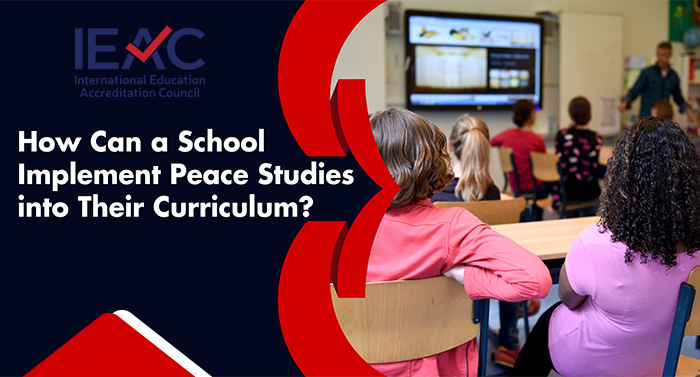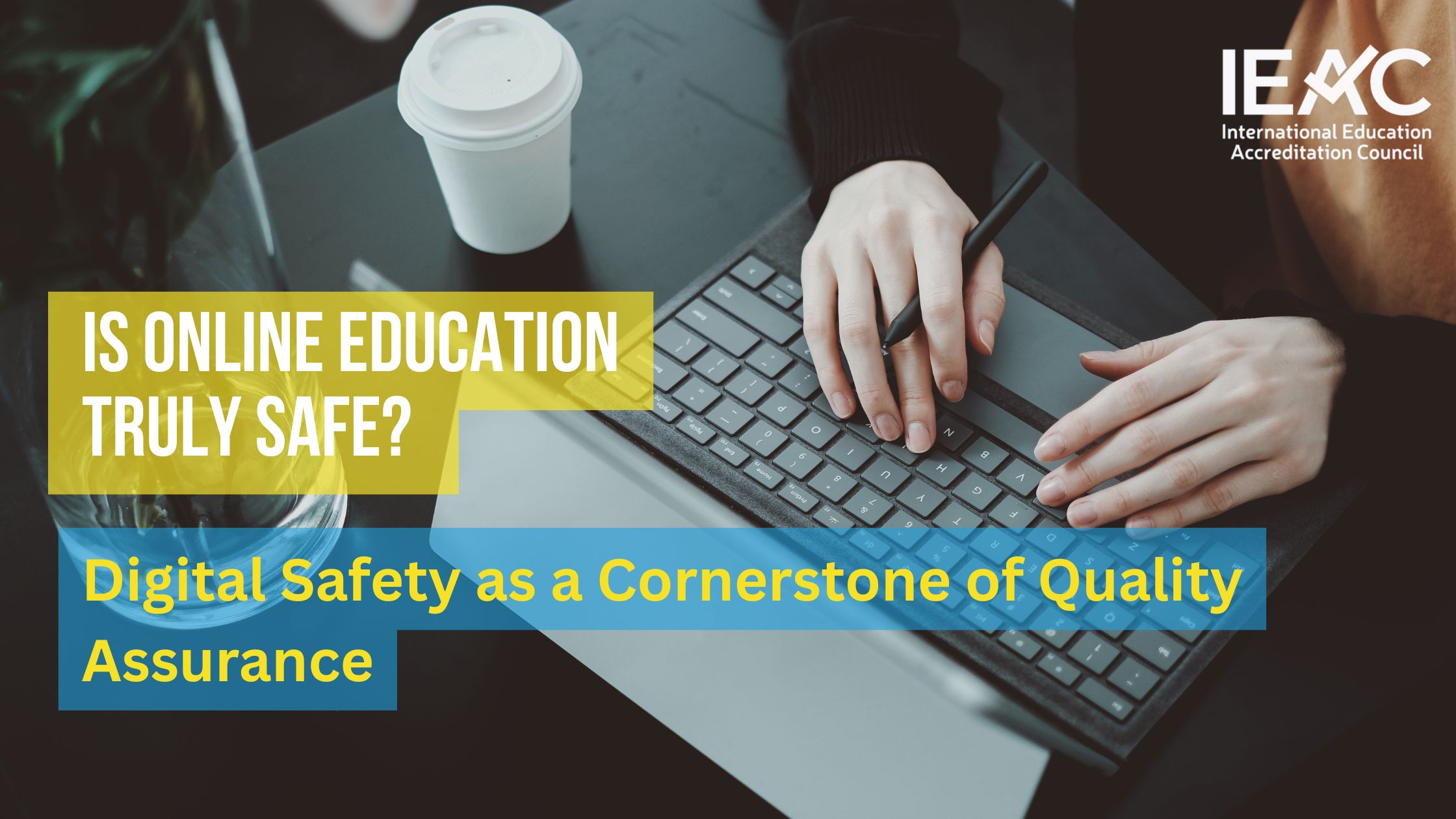- Home
- About IEAC
- Accreditation
- University Accreditation
- College Accreditation
- Online Institution Accreditation
- School Accreditation
- University Recruitment Agency Accreditation
- Programmatic Accreditation
- Teacher/ Lecturer Accreditation
- Religious Institutes Accreditation
- Affiliate Accreditation
- Research Accreditation Candidacy Accreditation
- IEAC Membership
- Institutions Accredited
- Accreditation Process
- Contact Us Webinar Apply Now
Blog
How Can a School Implement Peace Studies into Their Curriculum?
Lorem ipsum dolor sit amet, consectetur adipiscing elit, sed do eiusmod tempor incididunt ut labore et dolore magna aliqua. Quis ipsum suspendisse ultrices gravida. Risus commodo viverra maecenas accumsan lacus vel facilisis.

How Can a School Implement Peace Studies into Their Curriculum?
In an increasingly interconnected and often, conflict and tumultuous world, the importance of teaching Peace Studies in schools cannot be overstated. This educational approach fosters critical thinking, empathy, and conflict resolution skills among students, preparing them to navigate the complexities of modern society. Implementing Peace Studies into the school curriculum not only enriches students' learning experiences but also contributes to a more harmonious community.
Here’s some ways schools can effectively integrate Peace Studies into their curriculum.
1. Understand the Core Principles of Peace Studies
Before implementing Peace Studies, educators and administrators should familiarize themselves with its core principles. Peace Studies encompasses a range of topics, including conflict resolution, human rights, social justice, and global citizenship. Understanding these foundational aspects will help schools create a curriculum that is both comprehensive and relevant. It is important that you engage in and gather information from organisations such as United Nations.
2. Engage Stakeholders
Successful implementation requires the involvement of various stakeholders, including teachers, parents, students, and community members. Organising forums, webinars or workshops can facilitate discussions about the importance of Peace Studies and garner support for its inclusion in the curriculum. By involving the community, schools can create a more inclusive and diverse educational environment.
3. Develop a Curriculum Framework
Creating a structured curriculum framework is essential for effective Peace Studies education. Schools can start by integrating Peace Studies into existing subjects such as history, social studies, and language arts. For instance, teachers can incorporate lessons on historical peace movements, literature that emphasizes empathy and understanding, or case studies on conflict resolution. Additionally, schools can develop standalone courses focused on Peace Studies that cover topics like nonviolent communication, mediation skills, and global issues.
4. Incorporate Experiential and student-centred Learning
Experiential, student centred learning is a powerful tool in Peace Studies education. Schools can organize workshops, role-playing activities, and community service projects that allow students to apply their knowledge in real-world contexts. For example, students can participate in conflict resolution simulations or engage in community-building activities that promote cooperation and understanding among diverse groups.
5. Train Educators
Teachers play a critical role in the successful implementation of Peace Studies. Providing professional development opportunities focused on Peace Studies methodologies, conflict resolution techniques, and inclusive teaching practices will empower educators to effectively teach these concepts. Schools can invite experts in the field to conduct training sessions or offer resources for teachers to explore indpendently. This should be an essential element of a Teachers CPD
6. Foster a Peaceful School Environment
Creating a peaceful school environment is fundamental to the success of Peace Studies. Schools can implement practices that promote respect, inclusivity, and collaboration among students and staff. Initiatives such as peer mediation programs, anti-bullying campaigns, and restorative justice practices can help cultivate a culture of peace within the school community.
7. Assess and Adapt
Finally, it’s crucial to assess the effectiveness of the Peace Studies curriculum and make adjustments as needed. Schools can gather feedback from students, parents, and teachers to evaluate the impact of the program. By continuously adapting the curriculum based on this feedback, schools can ensure that Peace Studies remains relevant and effective in meeting the needs of their students.
Implementing Peace Studies into a school curriculum is a transformative endeavour that equips students with essential life skills. By understanding the principles of Peace Studies, engaging stakeholders, developing a structured curriculum, incorporating experiential learning, training educators, fostering a peaceful environment, and assessing the program's effectiveness, schools can create an enriching educational experience that promotes peace, empathy, and understanding. As we strive for a more peaceful world, it is imperative that educational institutions take the lead in shaping the minds and hearts of future generations.
By adopting these strategies, schools can make significant strides in integrating Peace Studies into their curriculum, ultimately contributing to a more peaceful society.
.jpg)





